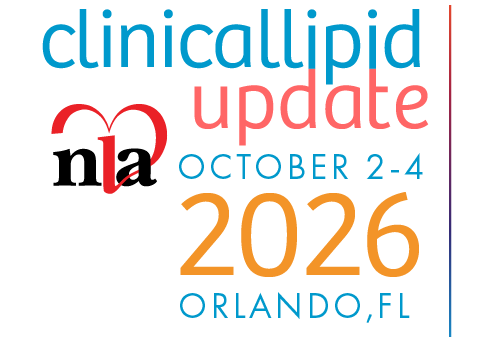Lipoprotein(a) [Lp(a)] is an independent risk factor for atherosclerotic cardiovascular disease (ASCVD). Although approximately 20% of the population has elevated Lp(a) levels (≥ 50 mg/dL or 125 nmol/L), there are currently no approved targeted medical treatments available. Lp(a) has a unique structure, similar to low-density lipoprotein-cholesterol, with an additional apolipoprotein(a) component, evolved from plasminogen. This structure is associated with proatherogenic, proinflammatory, and prothrombotic properties.1 In this article, we highlight the role of aspirin in primary prevention in relation to Lp(a) genotypes by Lacaze et al.
Aspirin use in primary prevention is controversial due to multiple recent negative trials; however, its ability to decrease platelet aggregation may address the atherothrombotic risk of elevated Lp(a).2,3 Additionally, individuals with elevated Lp(a) may have lower bleeding risk from aspirin due to its antifibrinolytic properties.2 In fact, in the Women’s Health Study, a benefit from low dose aspirin therapy in primary prevention was seen in carriers of an LPA variant. However, this analysis was limited to a younger population of women and included only one LPA variant.4
In this study by Lacaze et al., the role of low-dose aspirin (100 mg a day) in primary prevention was investigated in elderly individuals with Lp(a)-associated genotypes as a subgroup analysis from the ASPREE (ASPirin in Reducing Events in the Elderly) randomized controlled trial. Individuals were identified as having an elevated Lp(a) genotype if they were rs3798220-C carriers or in the highest quintile of an LPA genetic risk score (GRS).5 The LPA GRS includes 43 variants for apolipoprotein(a) and captures 60% of the variation in plasma Lp(a).6 In the overall group of 12,815 genotyped participants who were followed for a median of 4.7 years, there was no net benefit from low-dose aspirin therapy when comparing major adverse cardiovascular events (MACE) and clinically significant bleeding events (1.7 events per 1,000 person years versus 1.7 events per 1,000 person years, respectively). In rs3798220-C carriers, however, there was increased MACE risk in the placebo group (HR 1.90, 95% CI 1.11-3.24), but not in the aspirin group (HR 0.54, 95% CI 0.17-1.70). Low-dose aspirin reduced MACE by 11.4 events per 1,000 person years and increased clinically significant bleeding by 3.3 events per 1,000 person years. Additionally, the highest quintile of the LPA GRS was associated with increased risk for MACE in the placebo group (HR 1.70, 95% CI 1.14-2.55) but not in the aspirin group (HR 1.41, 95% CI 0.90-2.23). Individuals in the highest quintile of the GRS experienced reduction in MACE with aspirin of 3.3 events per 1,000 person years and higher clinically significant bleeding of 1.6 events per 1,000 person years. Thus, these results demonstrate a potential protective role and net benefit of low-dose aspirin in those with certain Lp(a) genotypes.5
.jpg)
There are limitations which should be noted. In particular, the study was limited to individuals of European ancestry, and, as a sub-study of ASPREE, may not be generalizable to younger individuals. The authors found a statistically significant interaction between aspirin allocation and rs3798220-C carrier status, but not with the GRS. This may be because the GRS does not perform as well at predicting very high Lp(a) levels. Additionally, only 3.2% of the study population were rs3798220-C carriers, while an estimated 20% of all individuals have elevated plasma Lp(a).5 Thus, the use of Lp(a) levels would be more broadly applicable.
In conclusion, there are multiple lines of evidence showing a causal association between Lp(a) and ASCVD.1 In the recent study by Lacaze et al., aspirin had a net benefit in elderly individuals with certain Lp(a) associated genotypes who had no prior history of cardiovascular disease.5 Future analyses should include directly measured Lp(a) and more diverse populations to better characterize the benefit of aspirin in mitigating Lp(a) associated ASCVD risk in primary prevention.
Dr. Rikhi has no financial relationships to disclose. Dr. Bhatia has no financial relationships to disclose.
References
- Tsimikas S. A Test in Context: Lipoprotein(a): Diagnosis, Prognosis, Controversies, and Emerging Therapies. J Am Coll Cardiol. 2017;69:692-711.
- Devesa A, Ibanez B, Fuster V. Lp(a): Are Antithrombotic Therapies the Key to Event Reduction? J Am Coll Cardiol. 2022;80:1299-1301.
- Zheng SL, Roddick AJ. Association of Aspirin Use for Primary Prevention With Cardiovascular Events and Bleeding Events: A Systematic Review and Meta-analysis. JAMA. 2019;321:277-287.
- Chasman DI, Shiffman D, Zee RY, et al. Polymorphism in the apolipoprotein(a) gene, plasma lipoprotein(a), cardiovascular disease, and low-dose aspirin therapy. Atherosclerosis. 2009;203:371-6.
- Lacaze P, Bakshi A, Riaz M, et al. Aspirin for Primary Prevention of Cardiovascular Events in Relation to Lipoprotein(a) Genotypes. J Am Coll Cardiol. 2022;80:1287-1298.
- Trinder M, Uddin MM, Finneran P, Aragam KG, Natarajan P. Clinical Utility of Lipoprotein(a) and LPA Genetic Risk Score in Risk Prediction of Incident Atherosclerotic Cardiovascular Disease.
Article By:
T32 Cardiovascular Medicine Fellow
Atrium Health Wake Forest Baptist
Winston-Salem, NC
Assistant Professor of Medicine
Division of Cardiovascular Medicine
University of California San Diego
San Diego, CA






.jpg)
.png)










